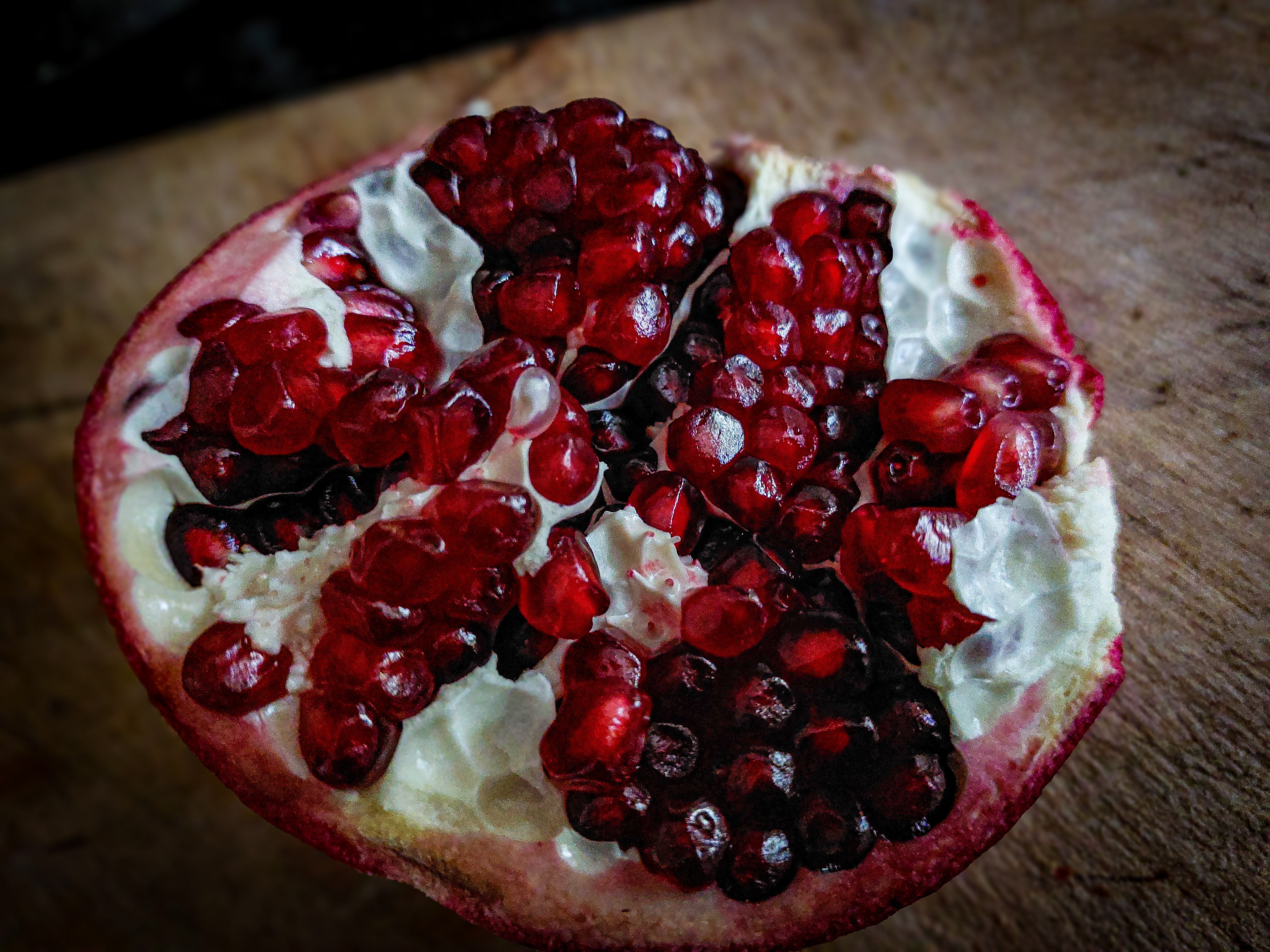The Art and Intricacies of Macro Photography
The image of a halved pomegranate reveals a world only fully appreciated through the lens of macro photography. Each seed, also known as an aril, is encapsulated in a translucent membrane, appearing like a cluster of gleaming rubies, each reflecting light in a slightly different way. The photograph provides an intricate look at the details—ranging from the soft sheen on each aril to the texture of the cream-white walls that separate each section. The deep crimson hues pop against the more neutral background, adding a dramatic contrast that draws the eye to the very heart of the fruit. Such an image perfectly embodies what macro photography is all about: the art of unveiling the minute, the intricate, and the often-overlooked details of our everyday surroundings.

Macro photography is the gateway into a miniature world, a specialized form of close-up photography where the small becomes grand, and the subtle becomes striking. By definition, it is a photographic style where the subject is captured at a magnification of at least 1:1, rendering life-size representations of tiny objects and details that are typically invisible to the naked eye. The most common subjects in macro photography range from the natural world, such as insects, flowers, and fruits, to man-made objects like coins and the textures of fabrics. Through the use of macro lenses and specialized equipment, photographers can create images that reveal new perspectives, bringing out fine details that would otherwise go unnoticed.
Technically, macro photography requires precision, patience, and an understanding of lighting and focus that goes beyond general photography. Depth of field is one of the biggest challenges in macro photography. At such close distances, achieving enough depth of field to keep the subject in focus becomes difficult, as it decreases sharply. Photographers must often use smaller apertures, which reduce the amount of light entering the lens, thereby necessitating longer exposures or the use of artificial lighting. The strategic use of diffused lighting can help highlight textures and details without casting harsh shadows or creating an overly glossy finish, as seen in the photograph of the pomegranate. Here, the play between light and shadow adds depth, making the arils appear almost three-dimensional, as if one could pluck them from the image.
Composition in macro photography goes beyond the rule of thirds and traditional framing. At such a close range, any slight variation in angle or focus can dramatically alter the final image. The arrangement of elements within the frame and the point of focus must be thoughtfully chosen to create a compelling visual narrative. The pomegranate’s uneven and random arrangement of seeds, captured with a focal emphasis on the central arils, tells a story of natural abundance. The surrounding textures, both rough and glossy, create a dynamic composition that invites the viewer to explore each crevice and curve.
The advancement in camera technology has greatly enhanced the capability for macro photography. The use of high-resolution sensors, focus stacking, and image stabilization has made it easier for photographers to capture intricate details with precision. Focus stacking, in particular, allows for multiple images at different focal points to be merged, creating a final image where the entire subject is sharp and detailed. This technique is indispensable when working with subjects that have a lot of depth, such as flowers or food, where different parts of the subject may fall in and out of focus due to the shallow depth of field.
Macro photography isn’t just limited to the realm of professionals with specialized equipment. The rise of mobile photography has seen a significant shift, with many smartphones now equipped with high-quality macro lenses or modes that enable users to capture close-up shots with surprising detail. The accessibility of macro photography to amateur and casual photographers has spurred creativity and has allowed more people to engage with this form of art. With a few adjustments to the settings and steady hands—or the use of a tripod—anyone can experiment with capturing the intricate details that surround them.
Beyond its aesthetic appeal, macro photography also has practical applications. In scientific fields, it is used to document specimens and natural phenomena, providing insight into the structure and function of different materials and organisms. It is a tool for botanists, entomologists, and researchers to study the minute details of their subjects with great precision. In the culinary world, macro photography has found its niche in food styling and marketing. Close-up shots of dishes, fruits, and ingredients emphasize freshness and texture, making them appear more enticing.
The world of macro photography invites viewers to slow down and take notice of what they would typically overlook. It transforms the ordinary into the extraordinary, celebrating the hidden details that make up our environment. Whether it is the tiny hairs on an insect’s leg, the delicate folds of a flower petal, or the vibrant seed sacs of a pomegranate, macro photography elevates the unseen to the forefront, encouraging a deeper appreciation for the complex beauty of the world around us. The image of the pomegranate, with its rich, glistening seeds and natural imperfections, exemplifies how macro photography can transform a simple object into a work of art that is as mesmerizing as it is revealing.